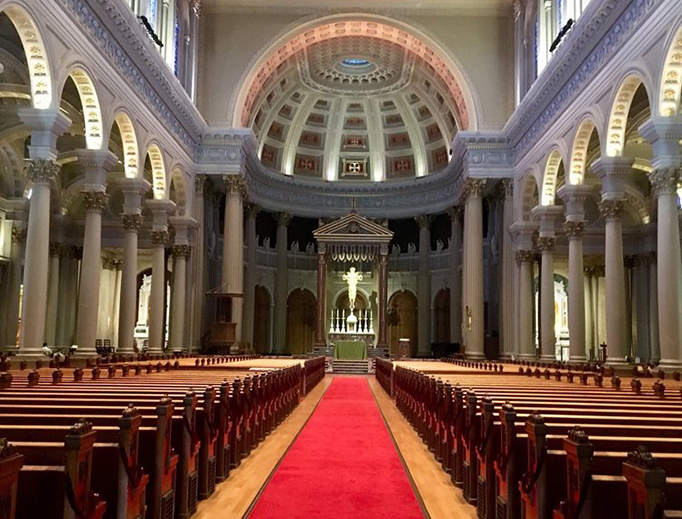St. Ignatius Church — Symbol of God’s Presence in San Francisco
The current St. Ignatius was officially dedicated Aug. 2, 1914.

San Francisco is home to many beautiful churches, and among its most impressive is St. Ignatius. Located on the campus of the University of San Francisco, its twin spires and dome built in the “Jesuit Baroque” style make it a notable feature of the San Francisco skyline. Its interior is impressive as well, with its high ceiling, magnificent arches and columns, impressive main and side altars and beautiful stained glass windows and art, all of which has been well maintained through the years.
Italian Jesuits settled in the Pacific Northwest and made their way to California, said Jesuit Father Greg Bonfiglio, the pastor of St. Ignatius. The current St. Ignatius is actually the fifth church constructed, at a site suggested by engineer John Pope and a design proposed by famous church architect Charles Devlin. The church was officially dedicated Aug. 2, 1914.
Father Bonfiglio came to the church after serving in Sacramento for 13 years. It was a change he was happy to make. He explained, “I love being a priest; I enjoy pastoral work. Working in a parish, I get to devote more time each week exclusively to being a priest.”
He continued, “Our church is built on a bluff, and is a prominent part of the skyline from many places in the city. It’s pretty remarkable. The church is a great symbol of God’s presence in San Francisco.”
While plant maintenance is a challenge with any historic building, St. Ignatius is structurally sound. Father explained, “My predecessor [Father Charles Gagan, pastor 1994-2012] did a phenomenal job with restoration and renovation. We’re in really good shape.”
The parish roof, for example, had leaked since the parish’s opening. Father Gagan initiated a successful capital campaign to repair it as well as attend to other desperately needed construction projects.
Awed by St. Ignatius’ Beauty
For much of its history, St. Ignatius was designated as a university chapel. In 1994, it reverted to parish status, serving a relatively small geographic area taken from the boundaries of surrounding parishes. Father said the pastoral team is looking at programs to build community among the disparate groups of parishioners, as well as to foster spirituality.
While some come for the spirituality, others are drawn by the beauty of the church itself. Ray Frost, retired sacristan, is still awed by St. Ignatius’ beauty. He said, “The church itself is so well balanced, it has a coherent unity that is rare,” he said. “The main and side altars, the arches, stained glass windows … they all fit together so well.”
His favorite aspect of the church is the Guadalupe altar, dedicated by Father Gagan in 1999. He remarked, “Father Gagan wanted that altar in place for the New Millennium. It’s a beautiful work of art.”
Anyone visiting the church can be overwhelmed by its beauty, he continued, but most importantly, “It’s a wonderful place to pray. It’s majestic and beautiful, but it also has an intimacy that believers find appealing.”













